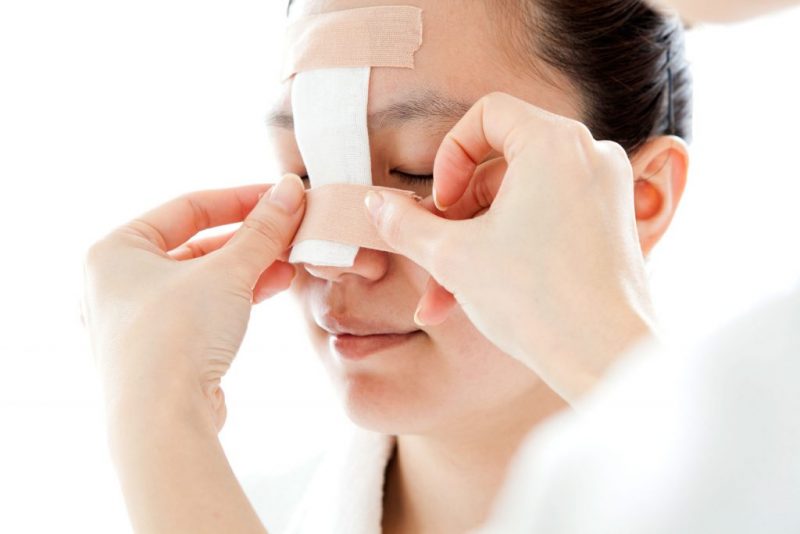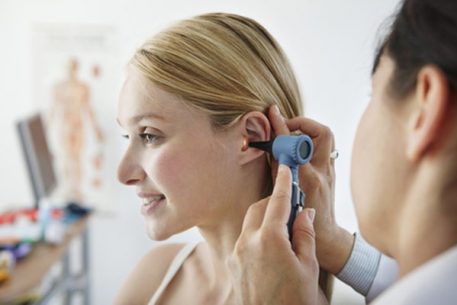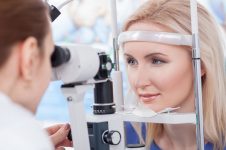The nasal cavity refers to the outer part of the upper respiratory tract and plays a large role in the breathing process. The organ is divided by a septum into two halves, one of which (anterior) is formed by cartilage, and the other (posterior) is a thin bone plate. Sometimes, due to various reasons, its curvature occurs, as a result of which breathing is disturbed. Septoplasty of the nasal septum will help restore its original configuration., which has two goals: restoring the shape of the nose and normal breathing.
Material Content:
Septoplasty of the nasal septum - what is it?
Septoplasty is an operation performed to correct a curved nasal septum, and rhinoplasty is practiced in cosmetology, correcting the shape of the nose.
Often these two operations are combined. With a nose injury, not only its external shape changes, but also its anatomical structure. After restoration of the nasal septum, the organ also acquires its natural form.
Types of operations and degrees of difficulty
Curvature of the nasal septum is corrected by several methods. The choice of type of surgical intervention is determined only by the surgeon, taking into account the indications and individual characteristics of the patient.
The main methods of septoplasty used in practical surgery:
- classic view - the operation is performed from the inner surface of the nasal cavity through an incision with a conventional scalpel.This technique is currently practically not used, as there are more modern types of intervention that give a good effect. The approach to the operation remains classic, but modern equipment is used;
- endoscopic septoplasty is a minimally invasive treatment method using an endoscope equipped with a mini-camera. The progress of the operation is transmitted to the monitor, which allows the doctor to track and correct all ongoing manipulations with the least damage to the cartilage tissue. The bulk of patients are operated on in this way. This type of surgical treatment allows you to carry out the most complex nose corrections, performing actions on tissues of different density. The advantage of this type of operation is that after it no external scars remain, that is, a complete cosmetic effect is achieved;
- laser septoplasty - the method gives a good result, but allows manipulations only on the cartilaginous part of the nasal cavity. The principle of the laser beam is based on its ability to concentrate, which leads to heating and evaporation of cartilage tissue. This property of the laser allows not only to cut tissue with a beam, but also to coagulate blood vessels, preventing bleeding and disinfecting the surgical field. This technique is well tolerated by patients and gives a positive effect from treatment;
- The radio wave technique is the most gentle method of surgical intervention, in which high-frequency waves are used instead of a scalpel. This technique is identical to using a laser, but, unlike it, the surgeon can work not only with cartilage, but also with bone tissue.
If not only the cartilage, but also the bones of the nasal cavity are damaged, the operation is done under general anesthesia under stationary conditions. And if the cartilage deformation is insignificant and the amount of surgical intervention is minimal, the treatment is carried out under local anesthesia in the surgical room.
Symptoms and signs
Curvature of the nasal septum provokes various disorders of the body's functions, which begin to affect the general condition of the patient.
The most common pathologies are manifested in the following symptoms:
- shortness of breath - may be manifested in part or complete inability to breathe through the nose;
- the development of chronic, often relapsing, rhinitis - an almost constant runny nose with mucous secretions;
- allergic reactions - develop gradually. Due to a decrease in immunity, allergic rhinitis appears, which is chronic in nature;
- headaches - occur reflexively due to the contact of a deformed nasal septum with the nasal mucosa due to its irritation;
- dryness and discomfort in the nose when breathing - develops as a result of a chronic inflammatory process in the mucous membrane;
- frequent nosebleeds - due to thinning of the mucous membrane on the side of the curvature of the septum, as a result of which the blood vessels remain close to the surface. Any mechanical impact leads to a violation of their integrity;
- snoring in a dream - develops due to insufficient oxygen supply to the lungs;
- chronic inflammatory process - dryness, sore throat, cough;
- a change in the shape of the nose - often occurs with a traumatic lesion.
Clinical signs of various disorders with a deformed septum arise due to a significant decrease in the functions of the nasal cavity.
Possible consequences
The abnormal location of the septum has a negative effect on neighboring organs, in which inflammation begins to develop and there, causing dysfunctions.
Such organs in which changes most often occur due to the negative influence of an abnormally located septum are:
- Eustachian tube and middle ear - chronic inflammation can spread through the channels connecting them, causing pain, congestion, hearing loss. Often the clinical picture of eustachitis or otitis media is supplemented by fever;
- maxillary sinuses - inflammation from the nasal cavity can go to the adnexa, causing sinusitis or frontal sinusitis;
- lacrimal sac and secret paths - the glands produce a tear that flows into the nasal cavity. This pathway can become a channel for the spread of infection.
Such complications due to the curvature of the nasal septum can have a long chronic course, reducing the body's defenses and provoking the risk of infectious attacks.
Nasal septum curvature treatment
Therapeutic measures are aimed at restoring the bone-cartilage structure of the nasal cavity. The return of the anatomical structure of the damaged septum is carried out only with the help of surgical intervention. Conservative therapy, to reduce the negative effects of a positive effect does not, therefore, only surgery is indicated.
Septoplasty and rehabilitation
In septoplasty, surgeons prefer the endoscopic method as a minimally invasive method that allows patients to quickly go through the recovery period and go on to an active life.
Surgical operations are performed through the nasal cavity under general anesthesia. But sometimes, according to indications and depending on the nature of the operation, local anesthesia can be applied. In time, the duration of the intervention is about 50-60 minutes.
At the end of surgical procedures, the reconstructed nasal septum is held by gauze swabs and special silicone fixatives. A day after the operation, they are removed.
Rehabilitation includes the following steps:
- the postoperative period is the time that the patient spends in a hospital for 2 days. Immediately after the operation, antibiotics are prescribed to prevent complications, as well as painkillers and sleeping pills, if indicated. Since after the operation, breathing is carried out only through the oral cavity, there is an increased thirst arising from the dryness of the mucous membrane. Therefore, the use of a significant amount of liquid is indicated. There are no recommendations for strict bed rest. Food is carried out in the usual manner;
- recovery period - the patient spends this time at home, and the treatment takes place on an outpatient basis. Within a week, the nasal cavity is washed three times a day with saline solutions, followed by removal of clots and crusts. The doctor in the clinic additionally cleans and removes the threads applied during the operation. The fixed dressing is removed after 1-1.5 weeks. After stopping the edema, breathing is completely restored independently within 3 weeks, if the intervention went without complications.
Laser treatment
Laser surgery is successfully used to deform the septum in the region of the cartilage, but provided that it is a whole and not a broken formation. Intervention lasts about 20 minutes under local anesthesia. In addition, such manipulation can be carried out in the clinic.
The laser, warming the cartilage tissue, makes it plastic. This condition allows the surgeon to change its shape. Having restored the correct configuration, the septum is fixed with tampons, which are removed after a day.
Surgery is generally well tolerated by patients., and breathing through the nose is quick.
Is it possible to cure without surgery
Almost always, correction of deformation of the septum is carried out surgically. It is possible to eliminate such a defect after an injury if only a few hours have passed since it was received. In this case, special elevators are used.
But for such treatment, certain conditions are necessary, and the nature of the traumatic damage to the nasal septum plays an important role.
Is disease prevention possible?
Preventive measures to prevent deformation of various degrees of the nasal septum consist only in preventing injuries to the facial part of the skull. There are no other measures to prevent the problem.
But if such a pathology arose, treatment to restore the normal form of the nasal septum should be carried out in a timely manner, preventing the development of pathological symptoms from other organs.


























